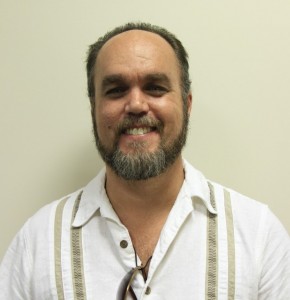 On my first day in prison the doctor checked to see if I was a homosexual. It was a regular part of the intake process, and anyone discovered to be gay (as determined by the doctor) was placed in segregation. This was my introduction to the extra burdens that gay men faced in confinement. Beyond the normal dangers of being in prison, gay men had to face additional dangers, and were always more likely to be assaulted, robbed and raped. Even so, many men who were gay preferred to live in the general population instead of the “sissy dorm” and many others worked to hide their sexual orientation from the staff and the inmates. Whatever hardships we all faced, for them it was always worse.
On my first day in prison the doctor checked to see if I was a homosexual. It was a regular part of the intake process, and anyone discovered to be gay (as determined by the doctor) was placed in segregation. This was my introduction to the extra burdens that gay men faced in confinement. Beyond the normal dangers of being in prison, gay men had to face additional dangers, and were always more likely to be assaulted, robbed and raped. Even so, many men who were gay preferred to live in the general population instead of the “sissy dorm” and many others worked to hide their sexual orientation from the staff and the inmates. Whatever hardships we all faced, for them it was always worse.
Being a LGBT kid is tough all over. Despite efforts to increase acceptance of gay, lesbian, bisexual and transgender people in our society, they, like many other minority groups, continue to face a disproportionate share of social problems. According to a report by Human Rights Campaign, LGBT youth suffer twice the rate of verbal and physical violence at school, are more likely to feel ostracized by their friends, are less accepted in places of worship and have worse relationships with their families than their straight peers.
They also experience higher rates of involvement with police and courts. A brief by The Center for American Progress states, “Though gay and transgender youth represent just 5 percent to 7 percent of the nation’s overall youth population, they compose 13 percent to 15 percent of those currently in the juvenile justice system.”
Family conflicts contribute to more homelessness among LGBT kids as they seek to escape or avoid further conflict with unaccepting parents. Homelessness can lead to greater contact with police. Another factor is complaints filed by disapproving parents claiming that a child is unruly or incorrigible. Similarly, school disciplinary problems can lead to an increase in dropout rates.
In the realm of incarceration things have long been difficult for gay youth. They are more apt to be victimized if “found out” and more likely to be put in solitary confinement or protective custody if they admit to being homosexual. Some of that is beginning to change though, thanks to an increased emphasis on the Prison Rape Elimination Act by the current administration and a call to change the traditional ways of dealing with LGBT. In place of these approaches, professionals are beginning to use evidence based practices that make kids safer.
An article in Wednesday’s edition of Washington Blade highlights some of these changes. Written by veteran reporter and regular Huffington Post contributor Thom Senzee, the piece profiles both the Santa Clara County, Calf., Juvenile Detention Division and Lorie Brisbin, a U.S. Department of Justice program specialist who helps educate corrections officials in best practices.
“Now, when a youthful offender who is lesbian, gay, bisexual, transgender or intersex comes in, they are processed much differently, providing the best possible outcome for the general population and the staff,” Brisbin is quoted as saying. This approach is based on the concept that should underlie all juvenile systems; kids are there to be rehabilitated, not to be punished.
The traditional approach of isolation is, in the words of Deputy Chief Probation Officer Laura Garnette, “lazy and injurious.” Instead, staff work to integrate LGBT youth into the general population, always working to keep these kids safe while simultaneously encouraging acceptance and tolerance in the others. This is the way it should be, and it’s my hope that the trend of working to both accept LGBT kids and to integrate them into the mainstream of rehabilitation programs will continue to grow.
My son Dominic was given a life sentence almost 14 yrs ago, However, during the time the State wanted to have my son housed in an adult facility. I said NO, NO, NO and begged for him to be with a Youthful Offender’s program as was ordered by the Judge. He has seen many advantages taken place with other Juveniles and was very hurt for them. He is now 26 yrs of age and is still behind bars but, is coming home soon.
However, my most concern for these Juveniles is to protect them from rapes, fights, and child molesters. They need to be able to have a life even though they made a mistake. Had it not happen to my first born son, I would not have had any idea what a mother/father goes through day/night for their child, weather it is a daughter or a son. I’ll like to get your feed back on this topic, we must fight for the next generation with much help and media coverage. Thank God my son is doing very well, and is helping lots of other inmates at his facility presently. His father is a speaker for the Jail system all around he county helping inmates to change their live styles, thinking so that they do not become repeat offenders. I speak to about 30 women each week the same concepts, and teach them the bible
Sincerely,
Ms. Culpepper